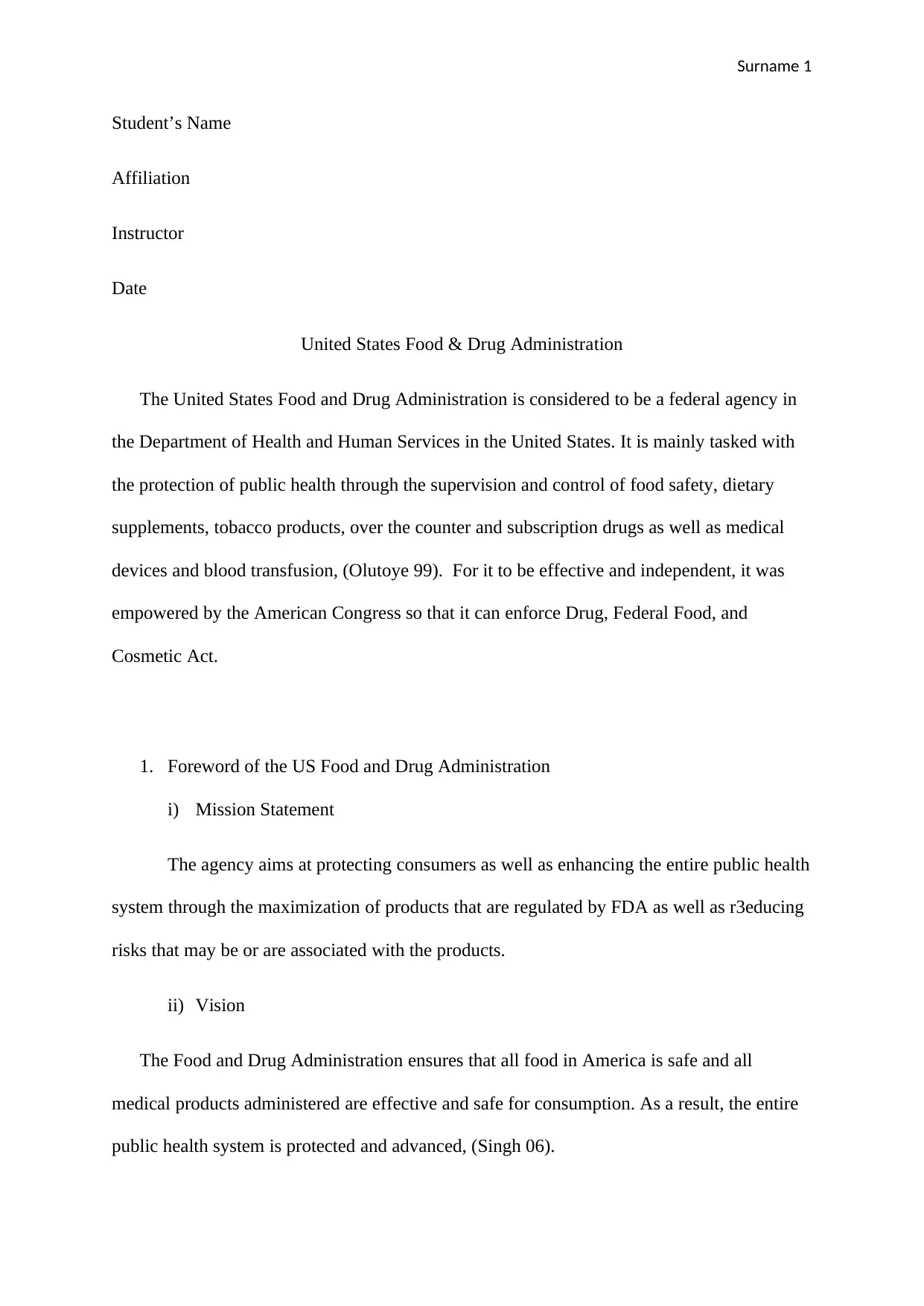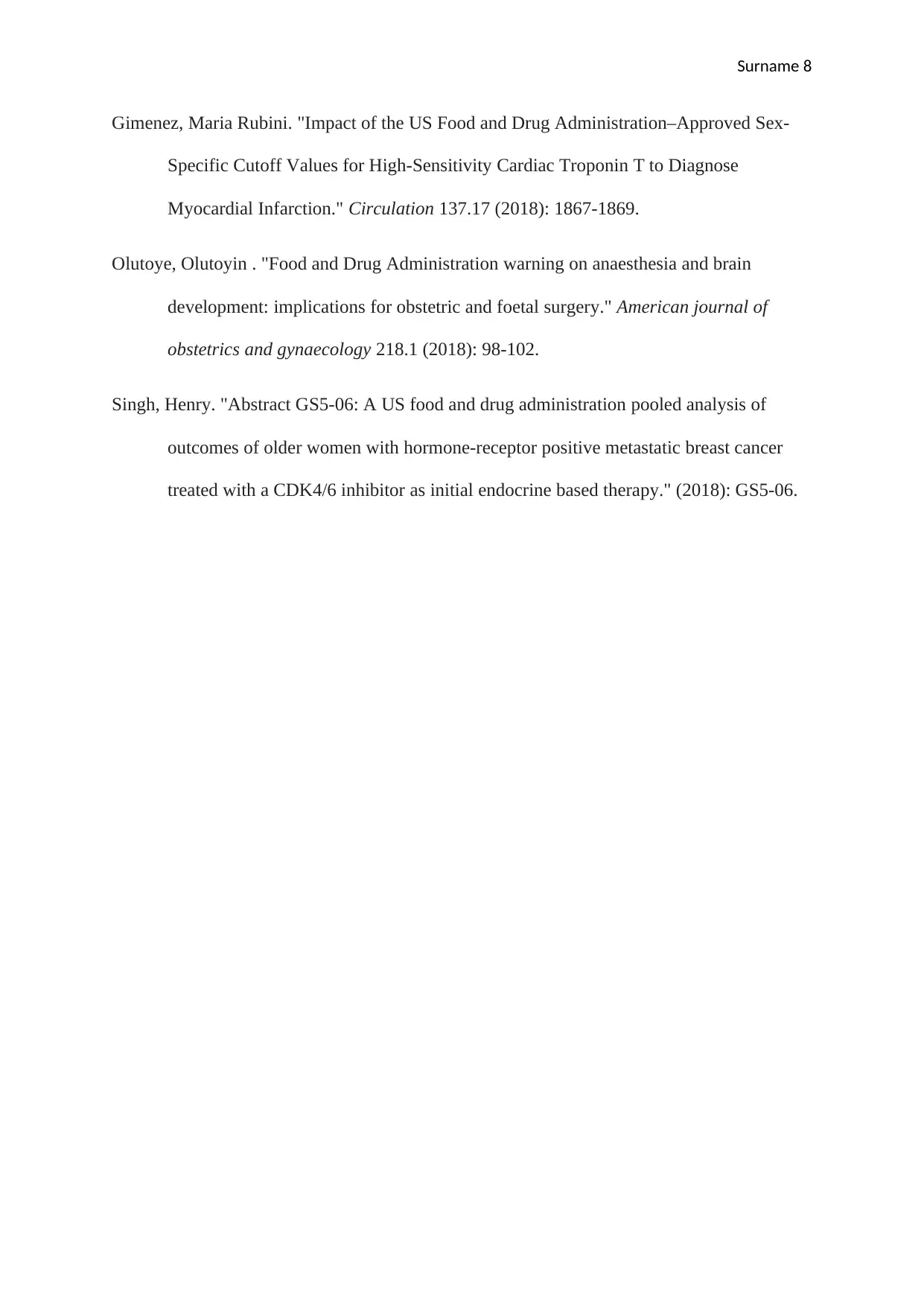Comprehensive Report: The US FDA's Role in Public Health and Safety
VerifiedAdded on 2023/06/10
|8
|1874
|225
Report
AI Summary
This report provides an overview of the United States Food and Drug Administration (FDA), a federal agency responsible for protecting public health through the regulation and supervision of food safety, drugs, medical devices, and other related products. The report details the FDA's mission and vision, highlighting its commitment to ensuring the safety and effectiveness of food and medical products. It explores the delegation of authority within the FDA, outlining how power is transferred and the responsibilities associated with it. The report also delves into the historical context of the FDA, tracing its origins back to the 1906 Pure Food and Drug Act and its subsequent evolution. Furthermore, it examines the organizational structure of the FDA, including its various directorates and their core functions. The report touches on alternative dispute resolution procedures within the agency, the Freedom of Information Act procedures, and whistle-blower protection. Finally, it discusses a recent court case involving the FDA and a news story related to harmful chemicals in food packaging, underscoring the agency's critical role in safeguarding public health and the potential risks of its elimination; solved assignments like this are available on Desklib.
1 out of 8














![[object Object]](/_next/static/media/star-bottom.7253800d.svg)